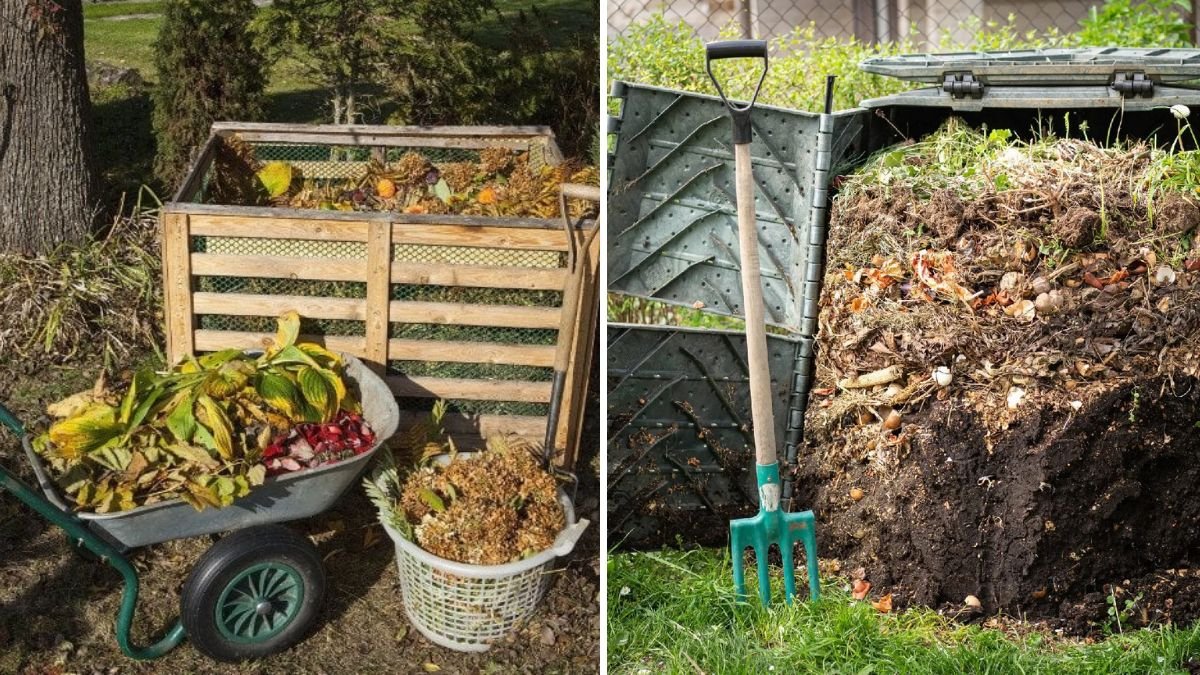Composting is one of the most effective and sustainable ways to recycle organic waste and enhance soil fertility. By converting kitchen scraps into nutrient-rich compost, gardeners can reduce household waste, improve soil health, and grow more robust plants. Composting not only minimizes environmental impact but also supports organic gardening by providing natural fertilizer that boosts plant growth without chemicals.
This guide provides a comprehensive 5-step approach to composting kitchen waste for gardens, ensuring an efficient, odor-free, and nutrient-packed composting process.
Step 1: Understanding What to Compost
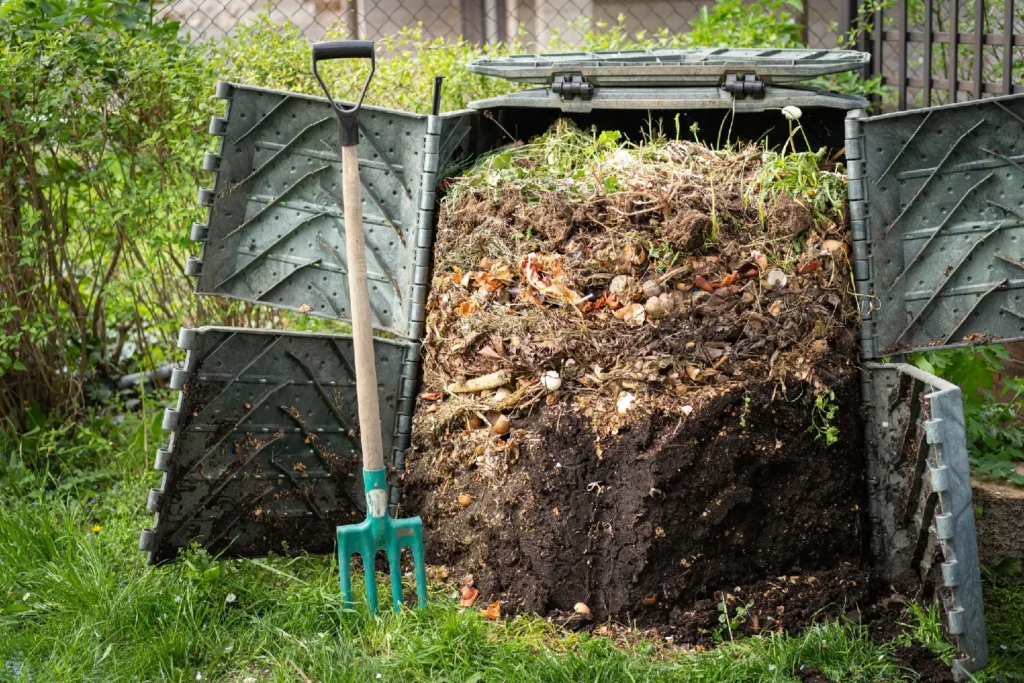
The first step in successful composting is understanding what materials are suitable for composting and which should be avoided.
- Kitchen Waste to Compost:
- Fruit scraps: apple cores, banana peels, citrus rinds
- Vegetable scraps: carrot tops, onion peels, leafy greens
- Coffee grounds and tea leaves
- Eggshells (crushed)
- Nut shells (except for walnut shells, which may inhibit growth)
- Materials to Avoid:
- Meat, fish, and dairy products (attract pests and produce odors)
- Oily or greasy foods
- Diseased plants or plants treated with pesticides
- Synthetic chemicals or non-biodegradable materials
- Carbon-to-Nitrogen Balance:
- Successful composting requires a balance of “greens” (nitrogen-rich materials) and “browns” (carbon-rich materials such as dry leaves, paper, cardboard, and sawdust).
- A good ratio is roughly 2:1 of browns to greens, which helps speed up decomposition and prevent foul odors.
Understanding which materials to compost ensures a safe and productive composting process, producing rich organic matter for your garden.
Step 2: Choosing a Composting Method
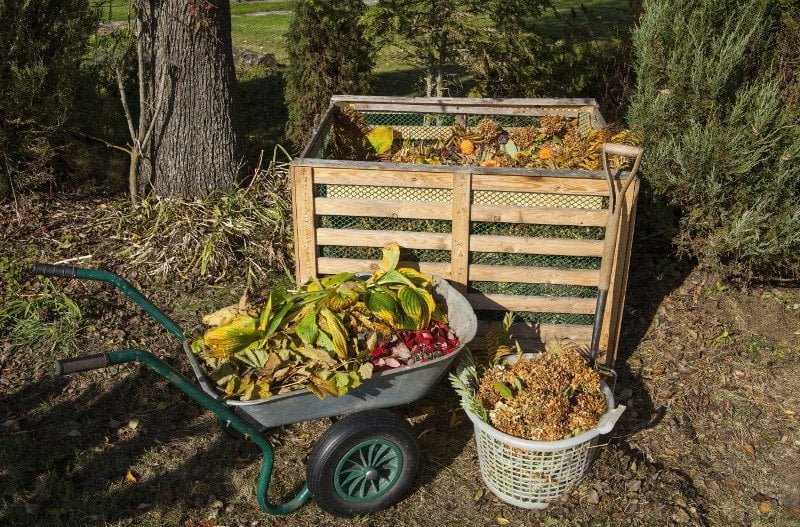
There are several composting methods suitable for kitchen waste, depending on available space, time, and convenience.
- Traditional Compost Pile:
- Suitable for backyards and gardens with sufficient space.
- Kitchen scraps are layered with browns in a dedicated compost pile.
- Compost Bin:
- Ideal for small gardens or patios.
- Use a bin with ventilation holes to retain heat and moisture while preventing odors.
- Tumbler Composting:
- A closed drum that can be rotated to mix materials.
- Speeds up decomposition and is easier to manage in small spaces.
- Vermicomposting (Using Worms):
- Uses red worms to break down kitchen waste into high-quality worm castings.
- Best for indoor or balcony composting and produces nutrient-dense compost.
Choosing the right method depends on your available space, the amount of kitchen waste, and the desired speed of compost production.
Step 3: Preparing and Layering the Compost
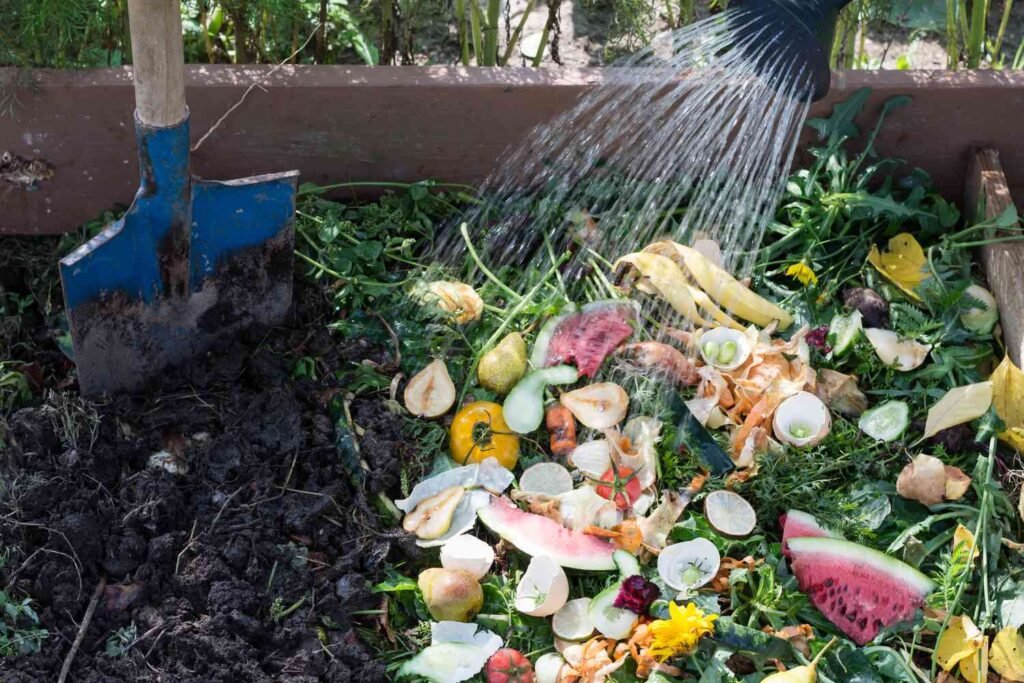
Proper preparation and layering of materials are crucial for efficient decomposition and odor-free compost.
- Chopping and Shredding:
- Cut large kitchen scraps into small pieces to increase surface area and speed up decomposition.
- Chop woody materials or fibrous vegetable scraps to prevent slow breakdown.
- Layering Technique:
- Start with a layer of browns (dry leaves, shredded paper) at the bottom for drainage.
- Alternate layers of greens (kitchen scraps) and browns until the pile or bin is full.
- Aim for layers of 2–4 inches thick to maintain balance and airflow.
- Moisture Control:
- Compost should be damp like a wrung-out sponge.
- Add water if too dry or extra browns if too wet to prevent odor and anaerobic conditions.
Proper preparation and layering create an environment conducive to microbial activity, accelerating composting and producing rich, dark compost.
Step 4: Maintaining the Compost
Maintenance is key to turning kitchen waste into high-quality compost efficiently.
- Turning or Mixing:
- Turn the compost pile every 1–2 weeks to aerate and mix materials.
- In a bin or tumbler, rotate or stir to introduce oxygen and distribute moisture evenly.
- Aeration prevents foul smells caused by anaerobic bacteria.
- Temperature Monitoring:
- Composting generates heat as microbes break down organic matter.
- Ideal compost temperature ranges from 120–160°F (50–70°C).
- High temperatures help kill weed seeds and pathogens, producing safer compost for gardens.
- Odor Control:
- If the compost smells sour or rotten, add more browns and turn the pile to aerate.
- Avoid adding meat or oily food, which produces strong odors.
- Pest Prevention:
- Keep food scraps covered with browns to prevent flies and rodents.
- Ensure the bin is properly sealed or use a compost tumbler with a lid for added protection.
Consistent maintenance ensures faster decomposition, better-quality compost, and a clean, odor-free composting experience.
Step 5: Harvesting and Using Compost
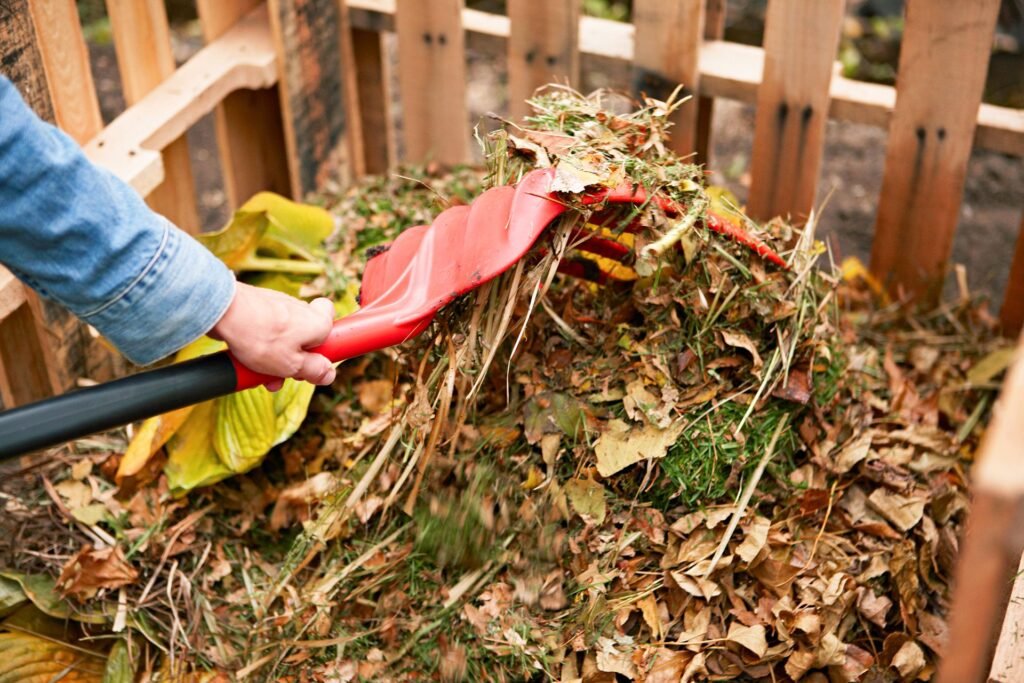
After several weeks to a few months, depending on the method and conditions, the compost is ready for use in your garden.
- Signs of Ready Compost:
- Dark, crumbly, and earthy-smelling material
- Original kitchen scraps and browns are no longer recognizable
- Moist but not soggy texture
- Harvesting:
- Remove finished compost from the bottom of the pile or bin.
- Sift through larger un-decomposed pieces and return them to the compost for further breakdown.
- Application in the Garden:
- Mix compost into garden soil to improve fertility, structure, and moisture retention.
- Use as a top dressing for potted plants or vegetables.
- Incorporate into seed-starting mixes to give seedlings a nutrient-rich start.
- Benefits of Using Compost:
- Increases soil organic matter and microbial activity
- Improves soil aeration, water retention, and drainage
- Reduces the need for chemical fertilizers, promoting organic gardening
- Enhances plant growth, yield, and disease resistance
Harvested compost turns kitchen waste into a valuable resource that enriches your garden naturally and sustainably.
Additional Tips for Successful Kitchen Composting
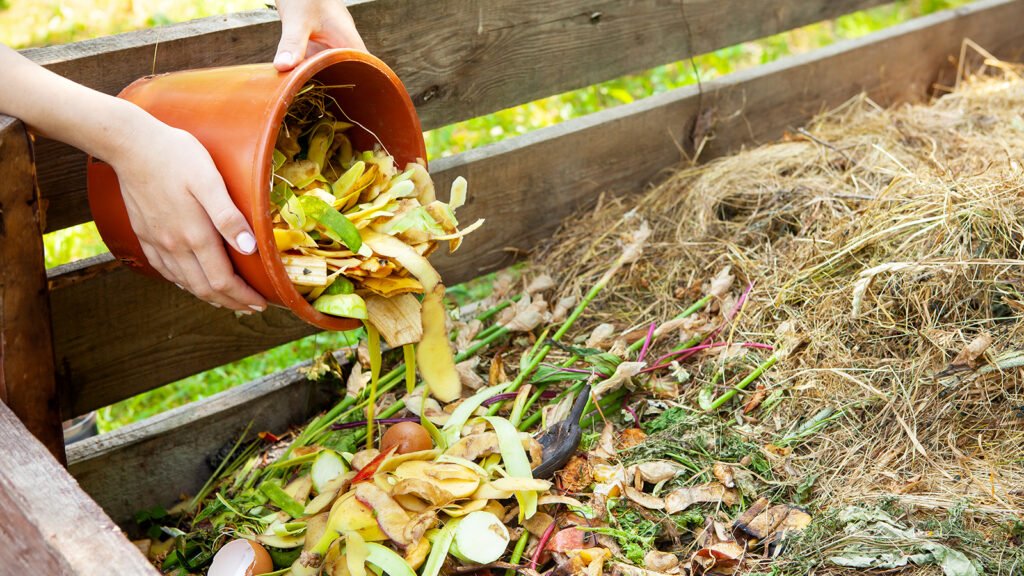
- Keep a Balanced Mix: Always maintain a balance of greens and browns to optimize decomposition.
- Chop Large Materials: Smaller pieces break down faster, speeding up compost production.
- Use a Compost Thermometer: Helps monitor microbial activity and ensures optimal temperatures.
- Avoid Toxic Materials: Do not compost synthetic chemicals, pesticides, or non-biodegradable waste.
- Layer Scraps Evenly: Even distribution of greens and browns prevents clumping and odor.
These simple tips maximize efficiency and ensure the production of high-quality compost.
Environmental and Gardening Benefits
Composting kitchen waste offers numerous benefits for both the environment and your garden:
- Reduces Waste: Diverts organic waste from landfills, reducing methane emissions.
- Saves Money: Produces free organic fertilizer, reducing reliance on commercial fertilizers.
- Sustainable Gardening: Supports eco-friendly gardening practices and enhances soil health naturally.
- Improves Plant Growth: Provides essential nutrients and beneficial microbes to plants, improving yields and resilience.
- Promotes Circular Living: Converts household scraps into valuable resources, creating a sustainable cycle of reuse.
By composting kitchen waste, gardeners can actively contribute to environmental conservation while improving their gardening outcomes.
Conclusion
Composting kitchen waste is a simple, sustainable, and highly rewarding gardening practice. By following this 5-step guide—understanding what to compost, selecting a composting method, preparing and layering materials, maintaining the compost pile, and harvesting nutrient-rich compost—you can transform everyday kitchen scraps into a powerful tool for enhancing your garden.
Not only does composting reduce household waste, but it also improves soil fertility, encourages robust plant growth, and supports organic gardening practices. With a little effort, attention, and consistency, anyone can turn kitchen waste into nutrient-rich compost, creating healthier gardens and contributing positively to the environment.
Whether you are a beginner gardener or an experienced horticulturist, composting is an essential practice for sustainable living and thriving gardens. Start today, and watch as your kitchen scraps transform into black gold for your plants.
